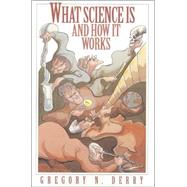
Note: Supplemental materials are not guaranteed with Rental or Used book purchases.
Purchase Benefits
Looking to rent a book? Rent What Science Is and How It Works [ISBN: 9780691095509] for the semester, quarter, and short term or search our site for other textbooks by Derry, Gregory Neil. Renting a textbook can save you up to 90% from the cost of buying.
| Preface | ix | ||||
| Prologue What Is Science? | 3 | (6) | |||
| PART I. EXPLORING THE FRONTIERS OF SCIENCE: HOW NEW DISCOVERIES ARE MADE IN THE SCIENCES | 9 | (58) | |||
|
11 | (15) | |||
|
26 | (9) | |||
|
35 | (7) | |||
|
42 | (10) | |||
|
52 | (15) | |||
| PART II. MENTAL TACTICS: SOME DISTINCTIVELY SCIENTIFIC APPROACHES TO THE WORLD | 67 | (56) | |||
|
69 | (20) | |||
|
89 | (18) | |||
|
107 | (16) | |||
| PART III. LARGER QUESTIONS: THE CONTEXT OF SCIENCE | 123 | (92) | |||
|
125 | (8) | |||
|
133 | (12) | |||
|
145 | (13) | |||
|
158 | (16) | |||
|
174 | (15) | |||
|
189 | (18) | |||
|
207 | (8) | |||
| PART IV. COMMON GROUND: SOME UNIFYING CONCEPTS IN THE SCIENCES | 215 | (88) | |||
|
217 | (13) | |||
|
230 | (22) | |||
|
252 | (22) | |||
|
274 | (11) | |||
|
285 | (10) | |||
|
295 | (8) | |||
| Epilogue So, What Is Science? | 303 | (2) | |||
| Index | 305 |
The New copy of this book will include any supplemental materials advertised. Please check the title of the book to determine if it should include any access cards, study guides, lab manuals, CDs, etc.
The Used, Rental and eBook copies of this book are not guaranteed to include any supplemental materials. Typically, only the book itself is included. This is true even if the title states it includes any access cards, study guides, lab manuals, CDs, etc.